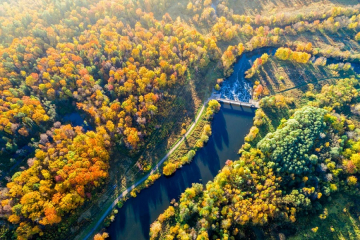On June 6th, 2018, Mexico approved a new series of federal rulings on water resources, known as the 10 Presidential Decrees regarding restricted areas. Despite media and stakeholder claims to the contrary, the National Water Commission (CONAGUA) has clarified that these decrees do not privatize water; rather, they eliminate the concept of restricted areas. Over-exploitation, however, is still a concern, given that only a partial volume of Mexican watersheds have been defined as reserves.
The UNAM (National Autonomous University of Mexico) notes that these decrees reveal the larger problem of inconsistency in water management. The UNAM says that the government should focus more on water management plans for the 295 Mexican watersheds, in order to better define not only volume but also water quality, as well as how to better oversee and understand the interconnection between surface and groundwater.
Civil organizations have also expressed reservations, specifically around industry bias and the risk that new concessions may not be equitable and sustainable. (Agua Para Todos and Campesina Cardenista have indicated plans to file a legal claim before the Supreme Court of Justice against the decrees.) Water in Mexico is a very sensitive subject, and any hint of favoring the private sector raises strong objections and protests, another reason it is critical for high-volume water users to have robust communication and stakeholder engagement plans.
Change is in the Water
Regardless of divided opinions among stakeholder groups, these changes will bring both opportunities and risks– both regulatory and reputational. For some industries, the physical supply of water itself may be at stake in the short, medium, or long run. For any company operating in Mexico, it is essential to understand the actual impact on the water supply.
The most pressing changes and opportunities include:
- The cancellation of water exploitation restricted areas in 295 hydrological basins will allow additional domestic and urban use of water resources in these areas – potentially increasing water stress in some areas;
- States are allowed to set aside reserved volumes of water and to grant water concessions, provided designated reserve volumes are not exceeded – an important element to prevent over-exploitation;
- Existing concessions will be recognized only for valid and in-compliance exploitation permits, potentially leading to the cancellation of permits and enforcement a stronger bite;
- Reservation zones will be valid for 50 years, which may be extended if current conditions prevail – a strong driver for managing the resources sustainably;
- Water management plans will be improved, defining not only volumes but water quality, which will likely lead to more focus on stricter discharge conditions.
Taking Action
The easiest and most effective way to manage these changes and associated risks is with a watershed assessment. Having executed hundreds of watershed assessments worldwide, we know that it’s important to understand the local water situation in detail--only with a full overview of all factors can one establish a coherent strategy to deal with the risks and opportunities, whether physical or regulatory. The seven steps to completing a watershed assessment are:
- Water policy and commitment
- Water strategy
- Water risk screening
- Product and brand footprint
- Facility optimization
- Watershed management
- Water security partnerships and engagement
Both cost-effective and fast to execute, a watershed assessment approach can be the first step towards a comprehensive and effective water stewardship program.
Need help with water-related issues? Contact us today.
Want more news and insights like this?
Sign up for our monthly e-newsletter, The New Leaf. Our goal is to keep you updated, educated and even a bit entertained as it relates to all things EHS and sustainability.
Get e-NewsletterHave any questions?
Contact us to discuss your environment, health, safety and sustainability needs today.





